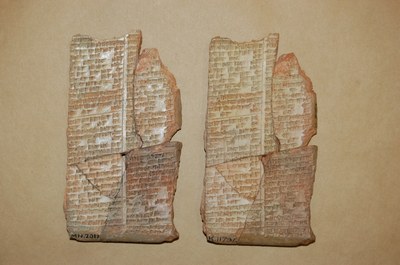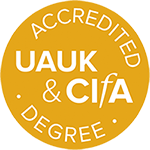An integral part of studying Mesopotamian languages at Cambridge is becoming familiar with the materiality of ancient inscriptions. The experience of reading cuneiform three-dimensionally (as per original tablets) is very different from reading it two-dimensionally (as per a scale drawing of the tablet).
Cambridge students have access to a substantial range of cuneiform inscriptions, including many of their 'set texts'. Most years, training is offered in copying cuneiform tablets, and this can form part of the assessment for courses in Mesopotamian languages.
The Museums
The Fitzwilliam Museum has a sizeable collection of cuneiform tablets, and there are several also in the Museum of Archaeology and Anthropology.
The 'Standard Inscription' of the Assyrian king Ashurnaṣirpal II, of which the Fitzwilliam has a magnificent specimen, is often used a 'set text'.
The Trinity tablets
Trinity College has a significant collection of cuneiform tablets, which it makes available to Cambridge Assyriology students.
The Replicas
In 2017, the University's Teaching and Learning Innovation fund supported the creation of high-fidelity replicas of three cuneiform inscriptions in Neo-Assyrian script. They were specially hand-made by the Craftsman in the British Museum's Conservation Department, Michael Neilson.
Here they are, together with the originals.
Hammurapi Laws (K. 4223)






